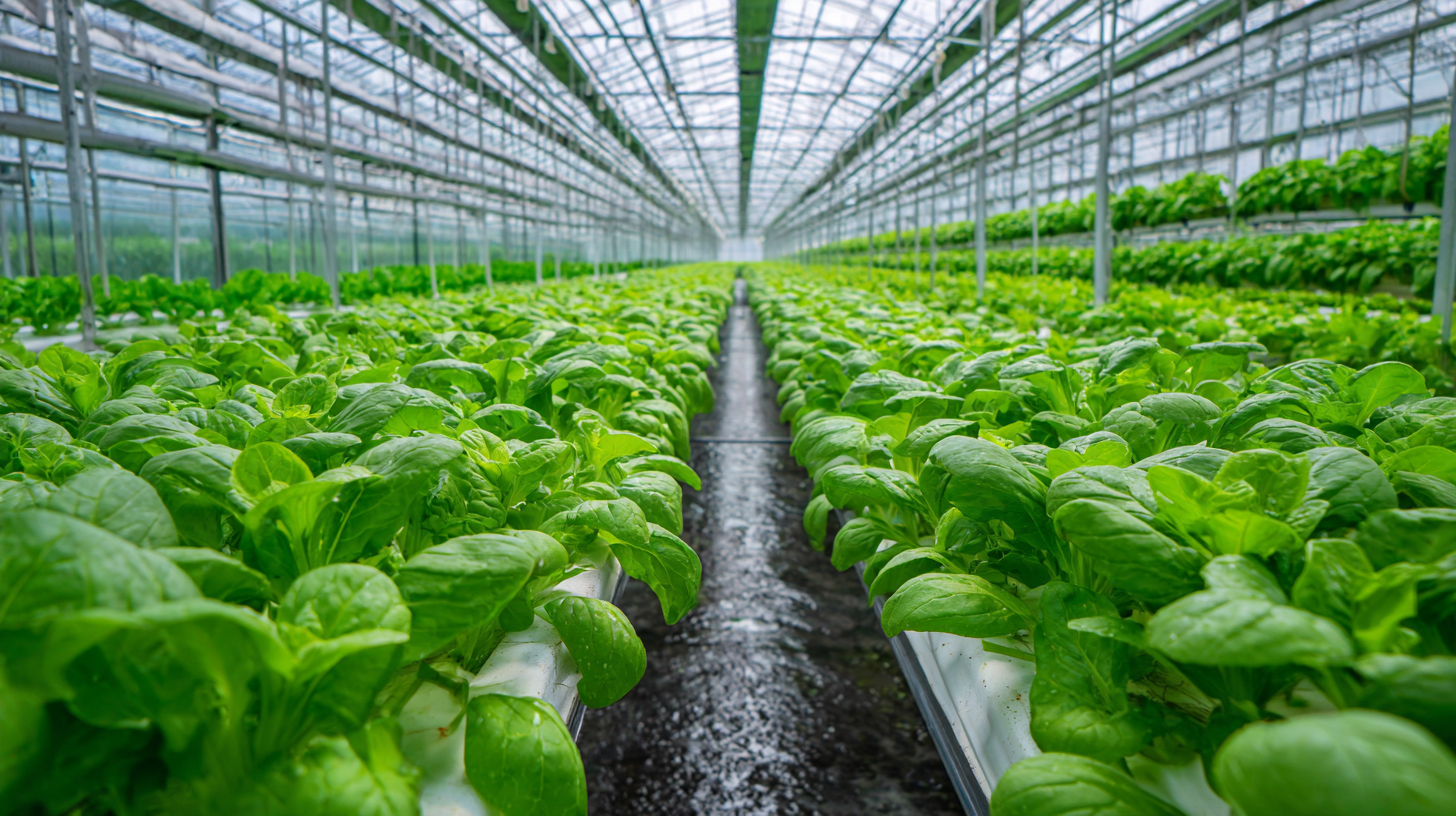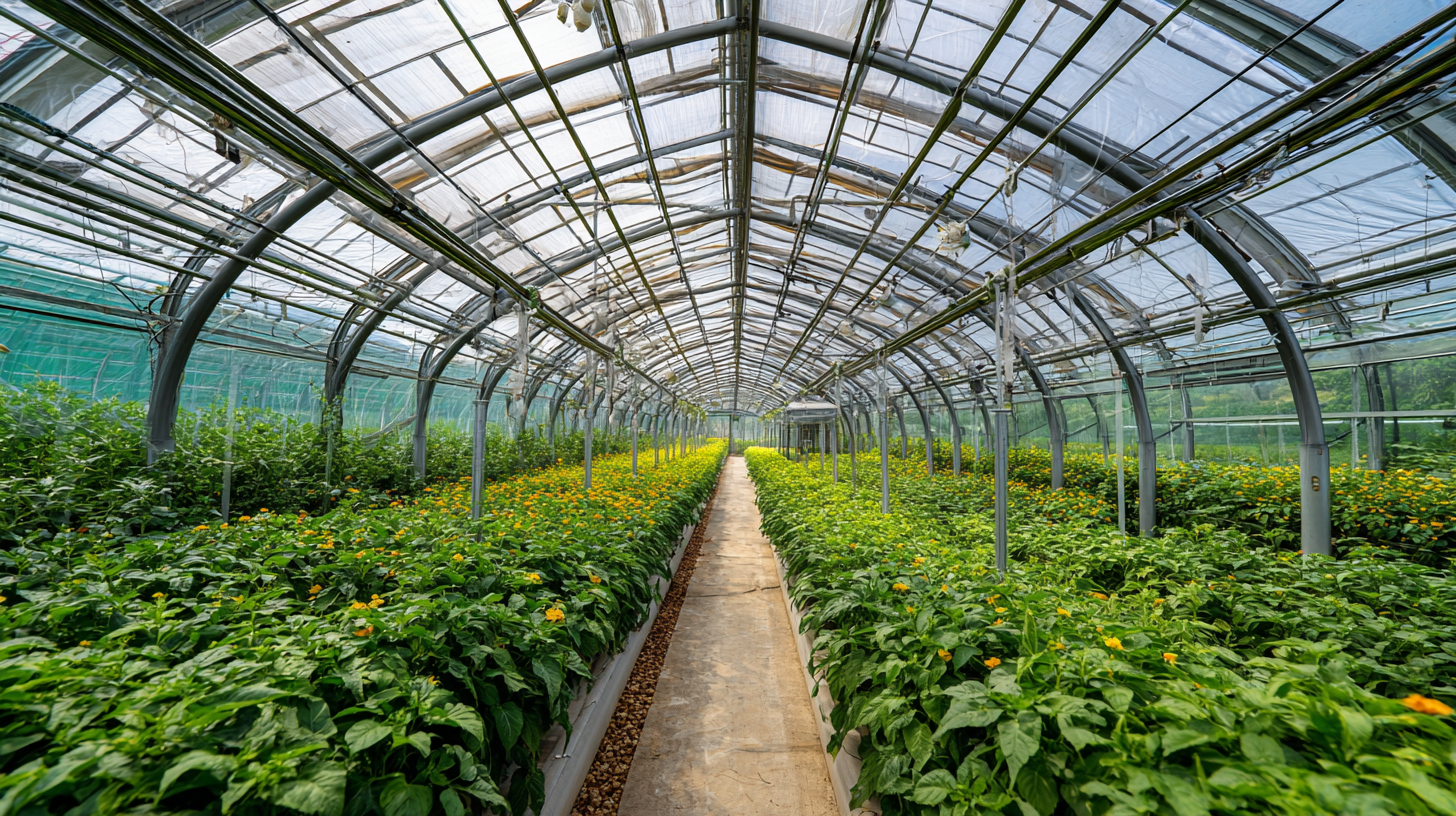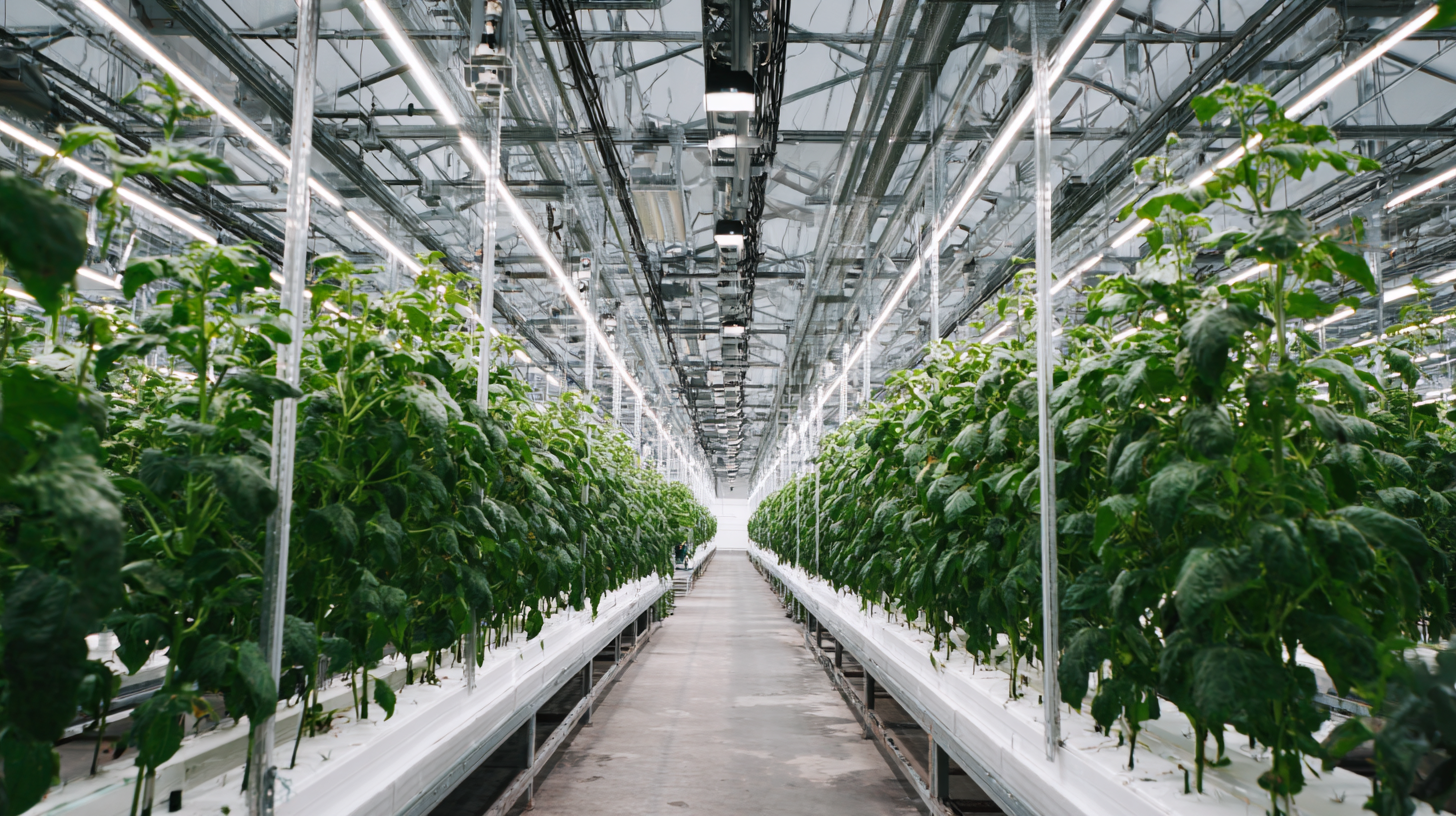
Finding Top Suppliers for the Best Intelligent Greenhouse Solutions in a Competitive Market
In an increasingly competitive agricultural landscape, the demand for efficient, sustainable farming practices has led to the rise of Intelligent Greenhouse solutions, which leverage advanced technologies such as automation, IoT, and AI to optimize plant growth conditions. According to a report by MarketsandMarkets, the global Intelligent Greenhouse market is projected to reach USD 2.6 billion by 2025, growing at a CAGR of 20.1% from 2020. This rapid expansion highlights the necessity for farmers and growers to identify top suppliers that can provide innovative and effective greenhouse solutions. As consumers increasingly prioritize sustainable practices, selecting the right partners in this sector is crucial for achieving both economic viability and environmental responsibility. In this blog, we will explore viable alternatives for sourcing Intelligent Greenhouse solutions that not only enhance productivity but also align with the principles of green farming.

Understanding the Intelligent Greenhouse Market Trends and Growth Projections
As the intelligent greenhouse market continues to evolve, understanding the latest trends and growth projections is crucial for stakeholders aiming to succeed in this competitive landscape. The global market for intelligent greenhouse solutions shows promising growth, fueled by advancements in agricultural technology and an increasing demand for sustainable farming practices. With projections indicating a significant uptrend, businesses must pay close attention to market influences such as climate change and consumer preferences that favor eco-friendly solutions.
**Tips for Success:** To stay relevant in the intelligent greenhouse sector, consider investing in cutting-edge technologies that optimize resource use, such as IoT devices and automated monitoring systems. Additionally, aligning your product offerings with sustainability trends can enhance the marketability of your solutions. Collaborating with top suppliers who prioritize innovation and sustainability will also position you better in meeting the diverse needs of modern agriculture.
As we look towards a future with a growing emphasis on environmental responsibility, those involved in the intelligent greenhouse market must adapt not only to current trends but also anticipate future demands. Continuous market research and innovation will be key drivers for success in this rapidly evolving domain.
Key Features to Look for in Quality Intelligent Greenhouse Solutions
When searching for quality intelligent greenhouse solutions in a competitive market, it’s essential to focus on key features that can significantly impact efficiency and productivity. Advanced climate control systems are paramount; they allow for real-time monitoring and adjustments of temperature, humidity, and ventilation, ensuring optimal growing conditions. Additionally, look for systems that integrate automation technology, enabling seamless irrigation and nutrient delivery that can save time and resources.

Tip: When evaluating potential suppliers, request demonstrations or case studies to see how their solutions operate in real-world scenarios. This practical insight can offer a better understanding of how their technology can meet your specific needs.
Another crucial aspect to consider is the sustainability of the solution. High-quality intelligent greenhouses should incorporate energy-efficient technologies, such as LED lighting and renewable energy sources, to reduce operational costs. Furthermore, features that enhance water conservation, like precision irrigation systems, are vital for environmentally conscious farming.
Tip: Ask suppliers about their commitment to sustainability and any certifications they hold. This will help ensure that your choice not only meets your production goals but also aligns with sustainable agricultural practices.
Evaluating Supplier Credentials: Certifications, Experience, and Innovations
In the rapidly evolving domain of intelligent greenhouse solutions, evaluating supplier credentials is crucial to ensure the selection of the best partners in a competitive market. A recent report from Research and Markets indicated that the global smart greenhouse market is projected to reach $1.48 billion by 2025, with a compound annual growth rate (CAGR) of 11.5%. As such, suppliers must demonstrate not only technological adeptness but also compliance with industry certifications.
Certifications such as ISO 9001 (Quality Management Systems) and ISO 14001 (Environmental Management) are critical indicators of a supplier's commitment to quality and sustainability. Furthermore, experience plays a vital role; suppliers with over five years in the industry are often more adept at navigating challenges and innovating solutions that enhance greenhouse efficiency. Innovations in automation and data analytics can drastically reduce resource consumption, aligning with the increasing emphasis on sustainable agriculture.
Tips for selecting a top supplier include assessing their history of successful projects and client feedback, which can provide insights into their reliability. Additionally, inquire about their approach to innovation; suppliers that invest in research and development are more likely to provide state-of-the-art solutions tailored to unique agricultural needs. Lastly, engaging with suppliers at trade shows can provide firsthand experience of their products and technologies, fostering informed decision-making.
Analyzing Cost vs. Benefits: Making Sense of Intelligent Greenhouse Investments
When investing in intelligent greenhouse solutions, one of the key considerations is the cost versus benefits analysis. Intelligent greenhouses utilize advanced technologies such as climate control systems, smart irrigation, and data analytics to optimize plant growth. The initial investment may seem steep, but understanding the long-term benefits can elucidate its value. For instance, the efficiency gained in energy consumption and water usage translates not only to cost savings but also to a more sustainable operation that appeals to environmentally conscious consumers.
Moreover, these systems can lead to increased yields and enhanced crop quality, which are crucial in today’s competitive agricultural market. By leveraging real-time data, growers can make informed decisions that reduce waste and enhance productivity. Though the upfront costs of implementing intelligent greenhouse technologies can be daunting, the potential return on investment, manifested as reduced operational costs and maximized harvests, often outweighs these expenses. Hence, businesses must carefully analyze these factors to determine the right balance between initial costs and long-term benefits to ensure sustained growth and profitability in the evolving landscape of modern agriculture.
Finding Top Suppliers for the Best Intelligent Greenhouse Solutions in a Competitive Market - Analyzing Cost vs. Benefits
| Supplier Type | Initial Investment ($) | Annual Maintenance Cost ($) | Estimated Yield Increase (%) | Payback Period (Years) |
|---|---|---|---|---|
| Hydroponic Systems | 30,000 | 2,500 | 25 | 3 |
| Automated Climate Control | 45,000 | 3,000 | 30 | 4 |
| LED Grow Lights | 15,000 | 1,200 | 20 | 2.5 |
| Soil Sensors | 10,000 | 800 | 15 | 1.5 |
| Integrated Pest Management | 20,000 | 1,500 | 18 | 3.5 |
Comparative Analysis of Leading Suppliers: Case Studies and Success Stories
In today’s burgeoning market for intelligent greenhouse solutions, selecting the right supplier is critical for achieving operational efficiency and sustainability. A comparative analysis of leading suppliers reveals that successful partnerships often hinge on proven innovations and tailored services.
 For instance, GreenTech Innovations has implemented cutting-edge sensor technology that allows for real-time monitoring of environmental conditions, significantly enhancing crop yield. Their recent partnership with a large-scale organic farm not only optimized resource usage but also reduced waste by 30%, showcasing a commitment to both sustainability and economic growth.
For instance, GreenTech Innovations has implemented cutting-edge sensor technology that allows for real-time monitoring of environmental conditions, significantly enhancing crop yield. Their recent partnership with a large-scale organic farm not only optimized resource usage but also reduced waste by 30%, showcasing a commitment to both sustainability and economic growth.
Another notable case is EcoGrow Systems, which has leveraged data analytics to provide actionable insights to their clients. Their collaboration with an urban agriculture startup resulted in the development of a fully automated greenhouse that uses AI to predict optimal planting schedules. This case highlights how adaptive strategies can lead to success in diverse environments, enabling urban farmers to maximize their production while maintaining eco-friendly practices. Such success stories underline the importance of engaging with suppliers who not only offer advanced technology but also demonstrate a robust understanding of client needs and market demands.
